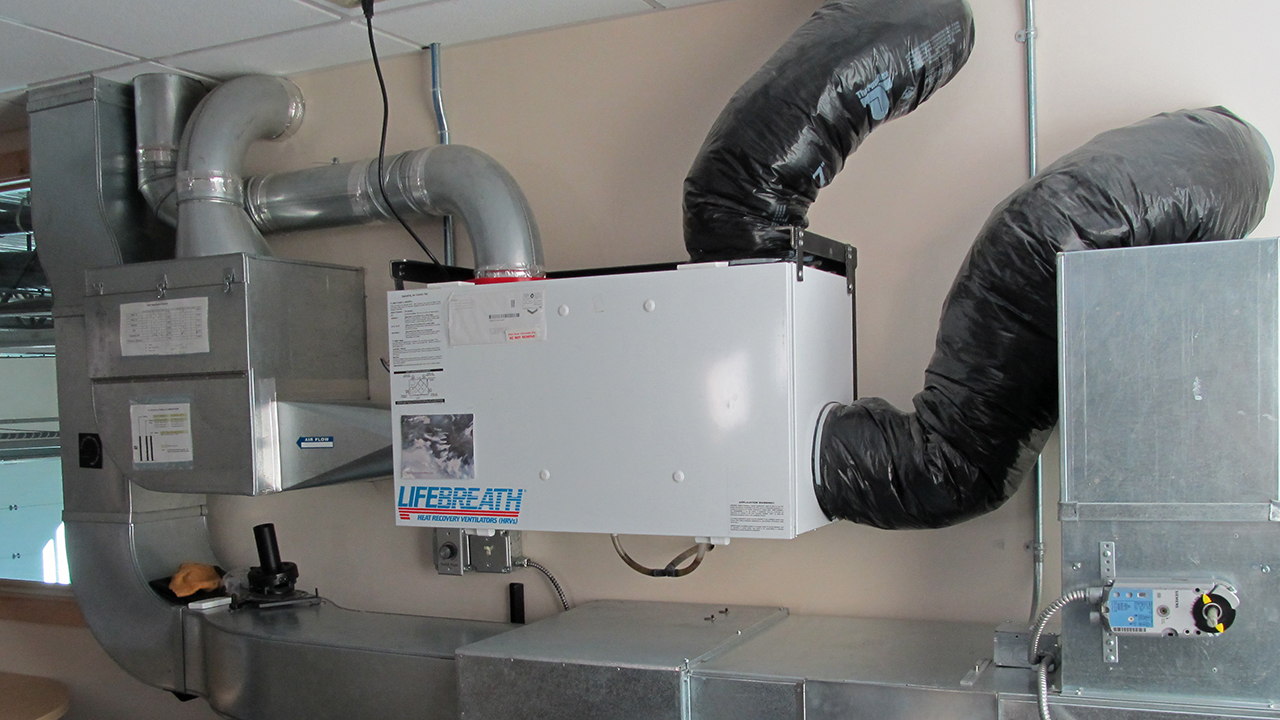Is HRV Worth It? Pros and Cons
Wiki Article
Checking out the Perks of Heat Recovery Ventilation for Energy Efficiency in Homes
Heat Recovery Ventilation (HRV) systems supply homeowners a functional strategy to improving energy effectiveness. By reclaiming heat from outbound air, these systems can substantially lower heating & cooling costs. In addition, they offer a consistent supply of fresh air, improving indoor air top quality and convenience levels. As home owners think about lasting options, recognizing the subtleties of HRV systems becomes significantly crucial. What factors should one review before making such an investment?Recognizing Heat Recovery Ventilation Systems

Just How HRV Boosts Indoor Air Quality

Power Cost Savings: The Economic Advantages of HRV
Taking full advantage of energy performance, heat recovery ventilation (HRV) systems supply considerable monetary benefits for property owners. By recuperating and recycling heat from exhaust air, HRVs noticeably reduce heating & cooling prices. This innovation can lead to energy cost savings of up to 30%, depending upon environment and use patterns. House owners frequently discover decreased utility bills soon content after installment, making HRVs an economically sensible financial investment gradually. In addition, several regions offer motivations or discounts for energy-efficient upgrades, additionally enhancing the economic allure. As power costs proceed to climb, the cost-effectiveness of HRVs becomes significantly clear. In general, the consolidation of HRV systems not just advertises power effectiveness however also contributes to lasting financial cost savings for families.The Ecological Influence of Heat Recovery Ventilation
A significant environmental advantage of heat recovery ventilation (HRV) systems depends on their capability to lower general power intake. By redeeming warmth from exhaust air and transferring it to incoming fresh air, HRV systems lessen the need for energy-intensive heating and cooling down techniques. This reduction in power need contributes to decrease greenhouse gas discharges, as less nonrenewable fuel source is required to preserve comfy indoor temperature levels. Furthermore, HRV systems improve indoor air top quality by efficiently exchanging stagnant air with fresh outdoor air, decreasing reliance on mechanical cooling systems that can damage the environment. On the whole, the implementation of HRV systems supports sustainable living practices and aligns with international efforts to fight climate adjustment by promoting power efficiency in household setups.
Picking the Right HRV System for Your Home
How can house owners guarantee they select the best heat recovery ventilation (HRV) system for their demands? Initially, they need to examine their home's dimension and design, as these factors affect airflow demands. Next off, reviewing the system's efficiency ratings is important, as greater scores show much better performance and energy financial savings. House owners must additionally think about installation and maintenance costs, contrasting various brands and versions for value. Furthermore, it is essential to examine noise degrees, as useful content some systems operate more silently than others. Consulting with HVAC experts can offer customized suggestions based upon certain home conditions. Lastly, useful site taking a look at individual testimonials and warranties can help in making an informed decision, making certain that the picked HRV system effectively enhances interior air high quality and energy efficiency.Frequently Asked Questions

How Frequently Should I Tidy or Keep My HRV System?
The regularity of cleaning or maintaining a warmth recuperation ventilation (HRV) system usually depends on usage and environmental elements. Usually, it is suggested to do upkeep every 6 months to assure peak performance and air top quality.
Can HRV Equipments Assist Minimize Humidity Levels Inside Your Home?
HRV systems can successfully lower indoor moisture degrees by trading stagnant, damp air with fresh, drier air from outside. HRV Heat Recovery Ventilation. This process helps preserve a well balanced interior setting, enhancing comfort and avoiding moisture-related problems
What Is the Lifespan of a Normal HRV System?
The life expectancy of a common heat recovery ventilation (HRV) system differs, generally lasting in between 10 to 15 years. Regular upkeep can expand its efficiency and operational life, ensuring peak performance throughout its use period.Exist Any Kind Of Noise Interest In HRV Equipments?
Noise worry about HRV systems can arise, specifically from follower operation. Nevertheless, lots of contemporary units are developed to reduce audio levels, guaranteeing they run silently while preserving efficiency, which deals with possible disturbances in living settings.Can I Install an HRV System Myself, or Do I Required a Professional?
The individual contemplated whether to set up the heat recovery ventilation (HRV) system directly or work with a specialist. Usually, while do it yourself installment is feasible, knowledge guarantees correct functionality and conformity with neighborhood building regulations, enhancing system effectiveness.Report this wiki page